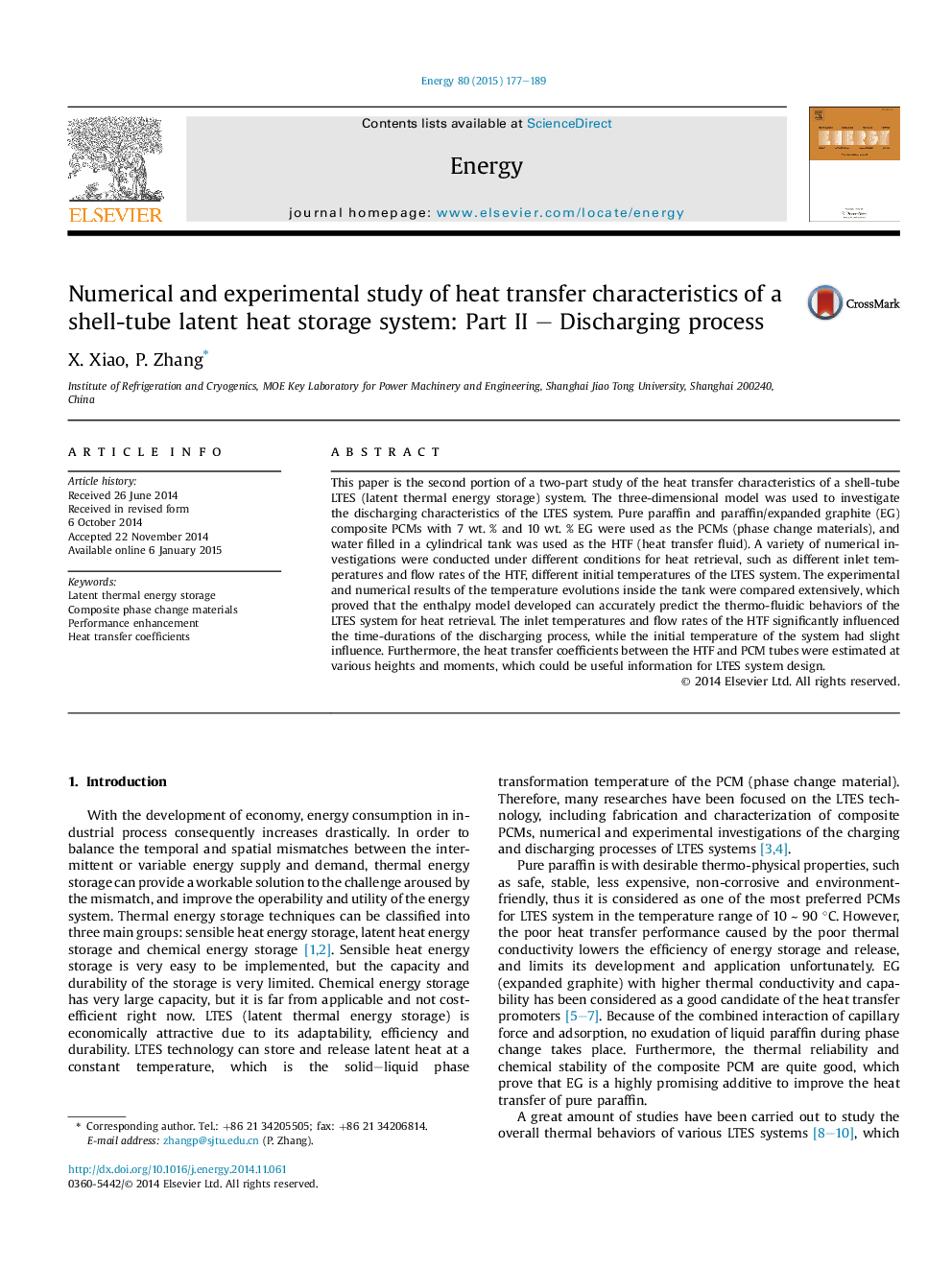| Article ID | Journal | Published Year | Pages | File Type |
|---|---|---|---|---|
| 1731998 | Energy | 2015 | 13 Pages |
Abstract
This paper is the second portion of a two-part study of the heat transfer characteristics of a shell-tube LTES (latent thermal energy storage) system. The three-dimensional model was used to investigate the discharging characteristics of the LTES system. Pure paraffin and paraffin/expanded graphite (EG) composite PCMs with 7Â wt. % and 10Â wt. % EG were used as the PCMs (phase change materials), and water filled in a cylindrical tank was used as the HTF (heat transfer fluid). A variety of numerical investigations were conducted under different conditions for heat retrieval, such as different inlet temperatures and flow rates of the HTF, different initial temperatures of the LTES system. The experimental and numerical results of the temperature evolutions inside the tank were compared extensively, which proved that the enthalpy model developed can accurately predict the thermo-fluidic behaviors of the LTES system for heat retrieval. The inlet temperatures and flow rates of the HTF significantly influenced the time-durations of the discharging process, while the initial temperature of the system had slight influence. Furthermore, the heat transfer coefficients between the HTF and PCM tubes were estimated at various heights and moments, which could be useful information for LTES system design.
Keywords
Related Topics
Physical Sciences and Engineering
Energy
Energy (General)
Authors
X. Xiao, P. Zhang,
